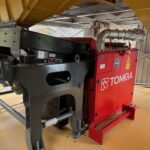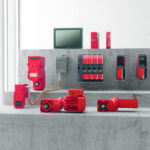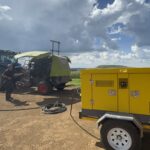The way you configure your new car has improved lately. Now, configuration technology is doing the same in engineering offices. Just as you shouldn’t need to be a car expert to configure the car, why would you as a gearbox design engineer need to be a bearing specialist to design that gearbox?
Choosing the right bearing for a new product has always been a time-consuming process. Design engineers need to consider hundreds of factors, many of which they need to estimate, in order to reach an optimum machine design.
Working in loops, a design engineer has to reach compromises. In a compact machine such as a gearbox, bearings compete for space with other components. Designers need to consider assembly, and whether bearings will need to be replaced during its lifetime. They also need to ensure that the solution chosen will fit within budget and overall weight limitations, to name a few. This is the performance-cost optimization that every engineer knows well. Once you are through, there’s the availability. If you are unlucky, you’ll need to start again because the product you chose was a special one, with too long delivery time to meet the start of production (SoP) date.
“The traditional bearing selection process is linear when it should be concurrent,” says Victoria Van Camp, CTO at SKF. Design engineers work out their requirements, using the SKF catalogue, to guide them through the various steps. We expect that this is something you as a customer engineer want to spend time on and learn – but why would you?
“Once you found a bearing that works, this goes to procurement, who in turn contacts SKF,” says van Camp. “Only then do they discover that the product chosen is a special-order item with a long lead-time or higher than expected cost.”
“Our application engineers can guide the customer to a better solution, but this might take days or weeks – adding cost and complexity. And with Covid-19, it has to be done remotely with risk of misunderstandings and more delays”
“Over the years, we have tried different ways to simplify picking the right bearing,” says van Camp. “We built dedicated calculation and simulation tools that automate many of the main tasks an engineer needs to complete. Now, a growing number of our customers are using them as integrated parts of their design process.” These calculation tools still don’t provide the critical link to cost and availability data, however, so they do not address some of the biggest pain points in the selection – the need to circle back. That is, until now.
Engineers, like most people, want a seamless user experience and put focus on the real difficulties. Realizing this, SKF took a new approach to bearing selection. “When you buy a car, the manufacturer often offers you a configurator,” says van Camp. “That is a simple tool, usually on a website, that allows you to describe your needs and wishes. The tool then guides you to a final (car) variant that meets your needs and is available.” Consumer product configuration tools include rules to ensure users only pick valid combinations of features. They also provide links to real time price and stock information, so you as a customer can see impact of your choices on eg. delivery time.
SKF is working on to bringing the ease-of-use of the configurator to bearing selection. The company teamed up with Tacton ( www.tacton.com), that specialises in “configure-price-quote” (CPQ) systems for industrial products.
“Our partners at Tacton have a track record building configurators for industrial use,” says van Camp. “But our requirements are different. In bearing selection you are not just picking from a list of sizes. Instead, you need to do all the solid mechanics calculations to see the trade-offs between different variants of ball bearing.”
Now, SKF is driving the development of the next generation of industrial configurator. It combines SKF’s bearing simulation technology with Tacton’s CPQ engine. “With real users, the impact of the new approach has been extraordinary,” says van Camp. “You can start the bearing selection process in the morning, and in the afternoon you have identified a solution that will meet your technical-, cost- and delivery requirements. This will be a game changer for engineering teams working on complex projects with tight timescales.”
The first version of the new SKF configurator will be launched later this year. It is designed specifically for electric vehicle powertrains, a fast-growing segment that places high demands on the bearings used. Over time, SKF plans to extend the approach to other industry segments. “Ultimately, we want to build more of our AI capabilities into these tools,” says van Camp. “We can foresee a world where bearing selection is automated, and every designer has an AI-powered bearing expert on their desktop.”
SKF’s mission is to be the undisputed leader in the bearing business. We do this by offering solutions that reduce friction and CO2 emissions, whilst at the same time increasing machine uptime and performance. Our products and services around the rotating shaft, include bearings, seals, lubrication management, artificial intelligence and wireless condition monitoring. SKF is represented in more than 130 countries and has around 17,000 distributor locations worldwide. Annual sales in 2020 were SEK 74 852 million and the number of employees was 40,963. www.skf.com
® SKF is a registered trademark of the SKF Group.
Issued by: Laverick Media Communications T: +27(0)79 949 1090 sonia@laverickmedia.co.za / www.laverickmedia.co.za















